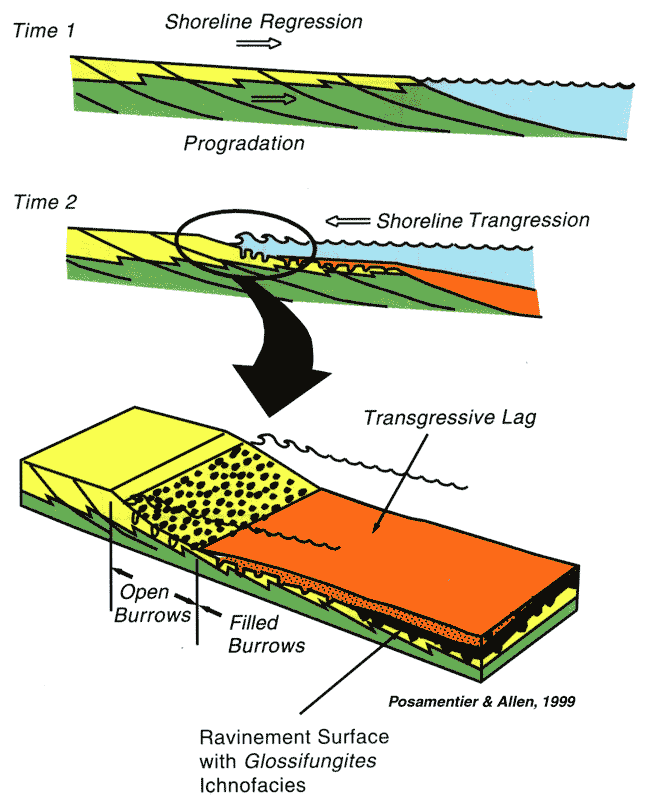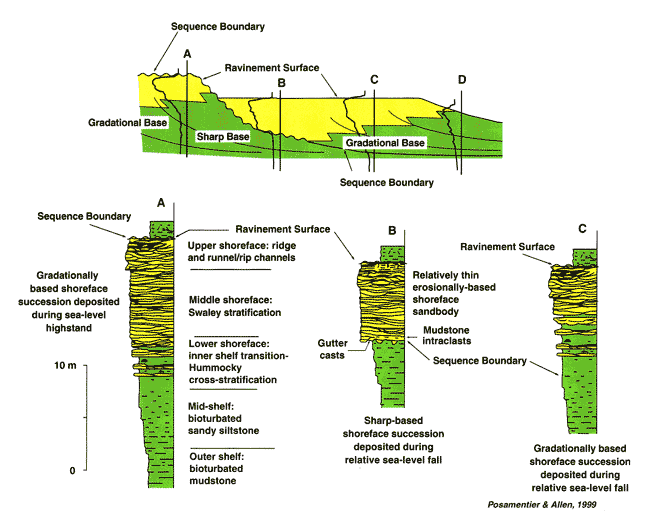|
A time transgressive or diachronous subaqueous erosional surface resulting from nearshore marine and shoreline erosion associated with a sea-level rise. This erosional surface parallels the migration of the shoreface "razor" across previously deposited coastal deposits. Burrows in this surface are often filled by sediments deposited during a sea-level rise.

ravinement surfaces are commonly ascribed to the transgressive movement of the landward margin of the transgressive systems tract. However, as the attached movie shows, these erosional surfaces will tend to occur wherever the landward edge of the sea rises over an underlying sedimentary surface. Thus if the late lowstand systems tract has a subaerial landward margin it will have an updip ravinement surface associated with it.

In outcrops and wells ravinement surfaces are commonly equated with the transgressive surface. However, as the attached movie shows, these erosional surfaces are time transgressive and tend to occur wherever the landward edge of the sea rises over an underlying sedimentary surface. They only match the transgressive surface when it tops the shelf margin.
glossifungites burrows are formed during the development of this regressive surface of erosion and are often filled by the reworked sediments associated with the landward margin of following transgression and maximum flooding surface. In this later case Glauconitic sediments, gravels and sand sized grains are the common reworked sediments overlying this surface. The log response of ravinement often provides evidence of carbonate cementation. This ravinement surface is equated to the transgressive surface.

|